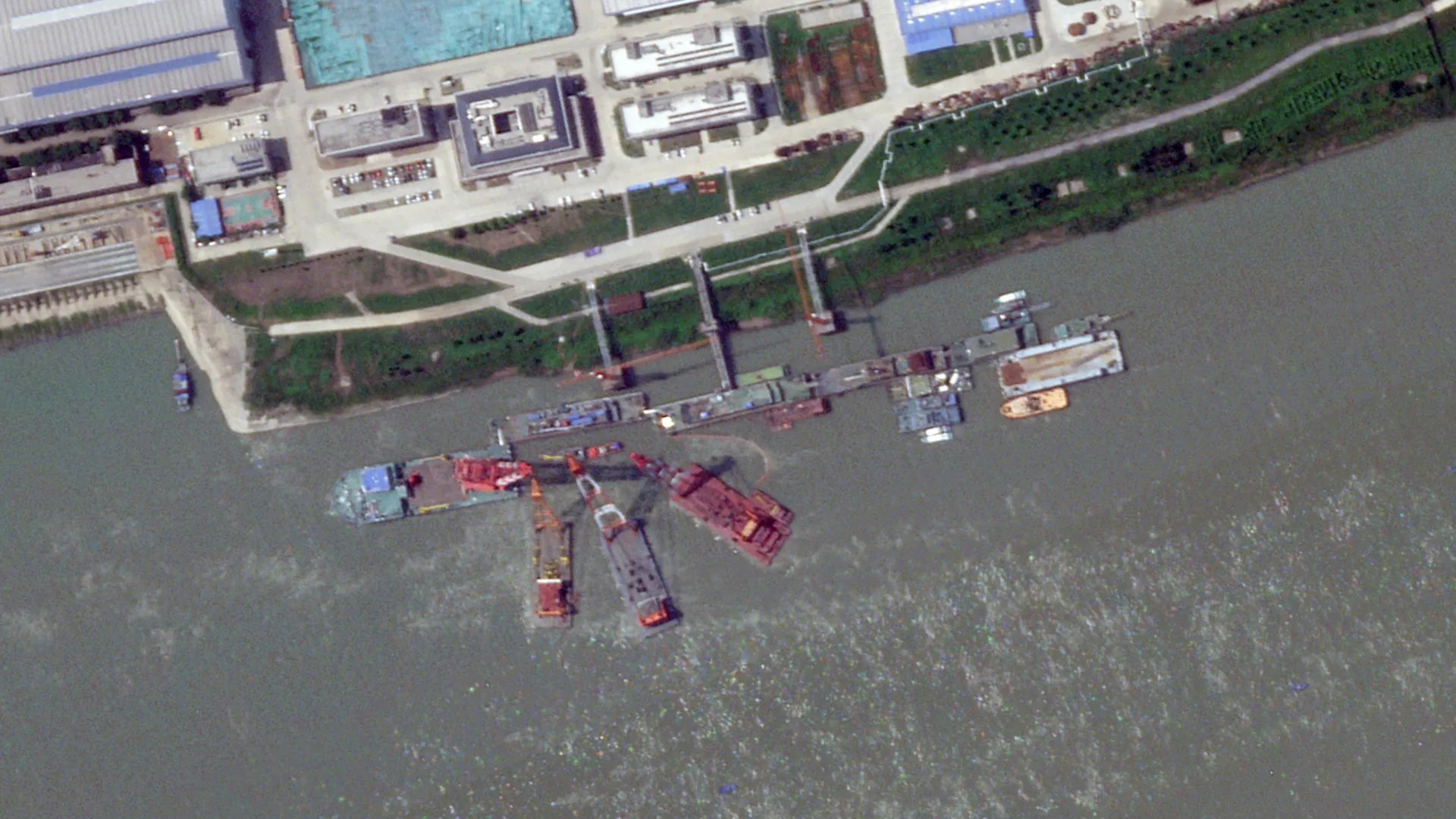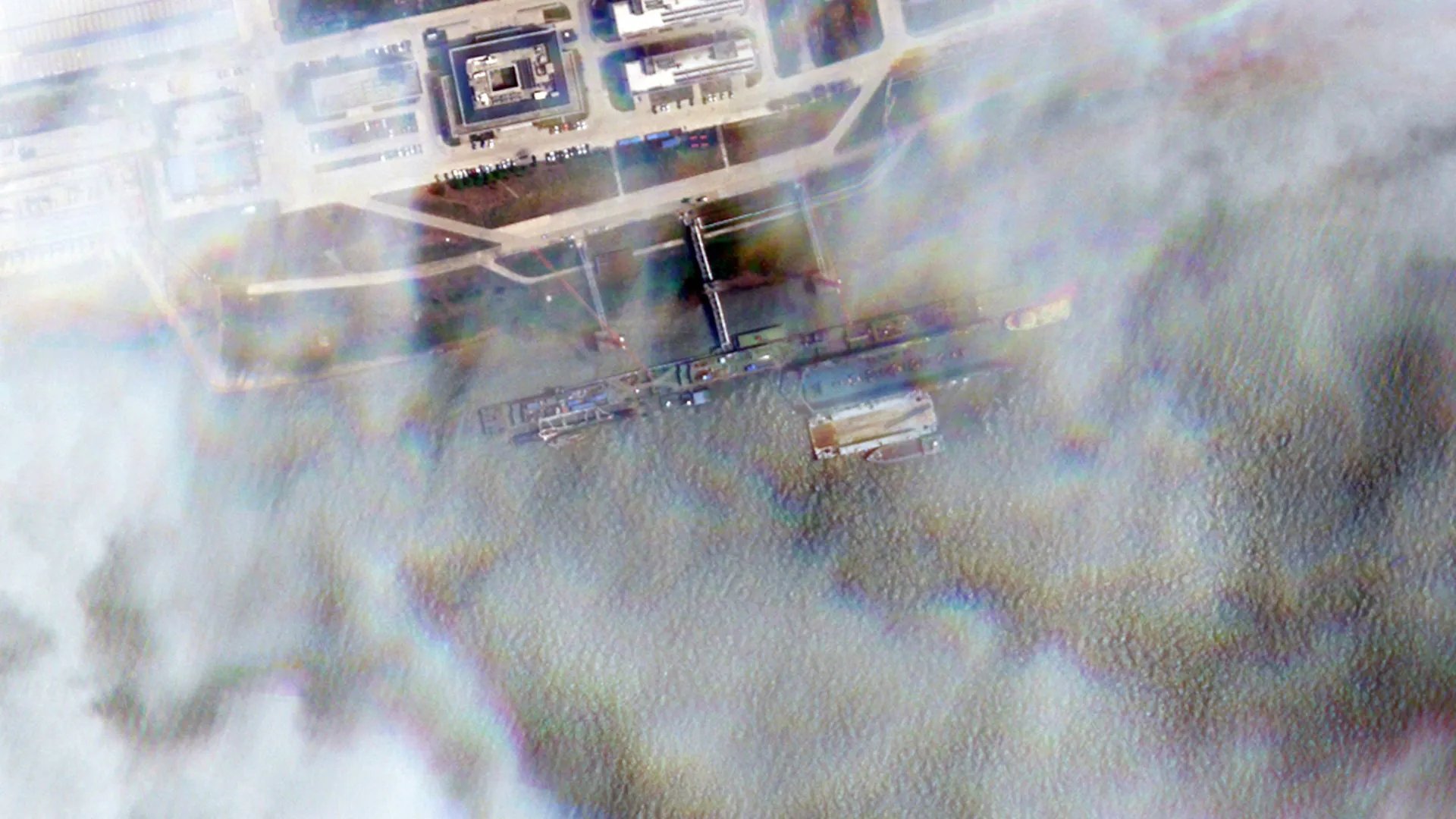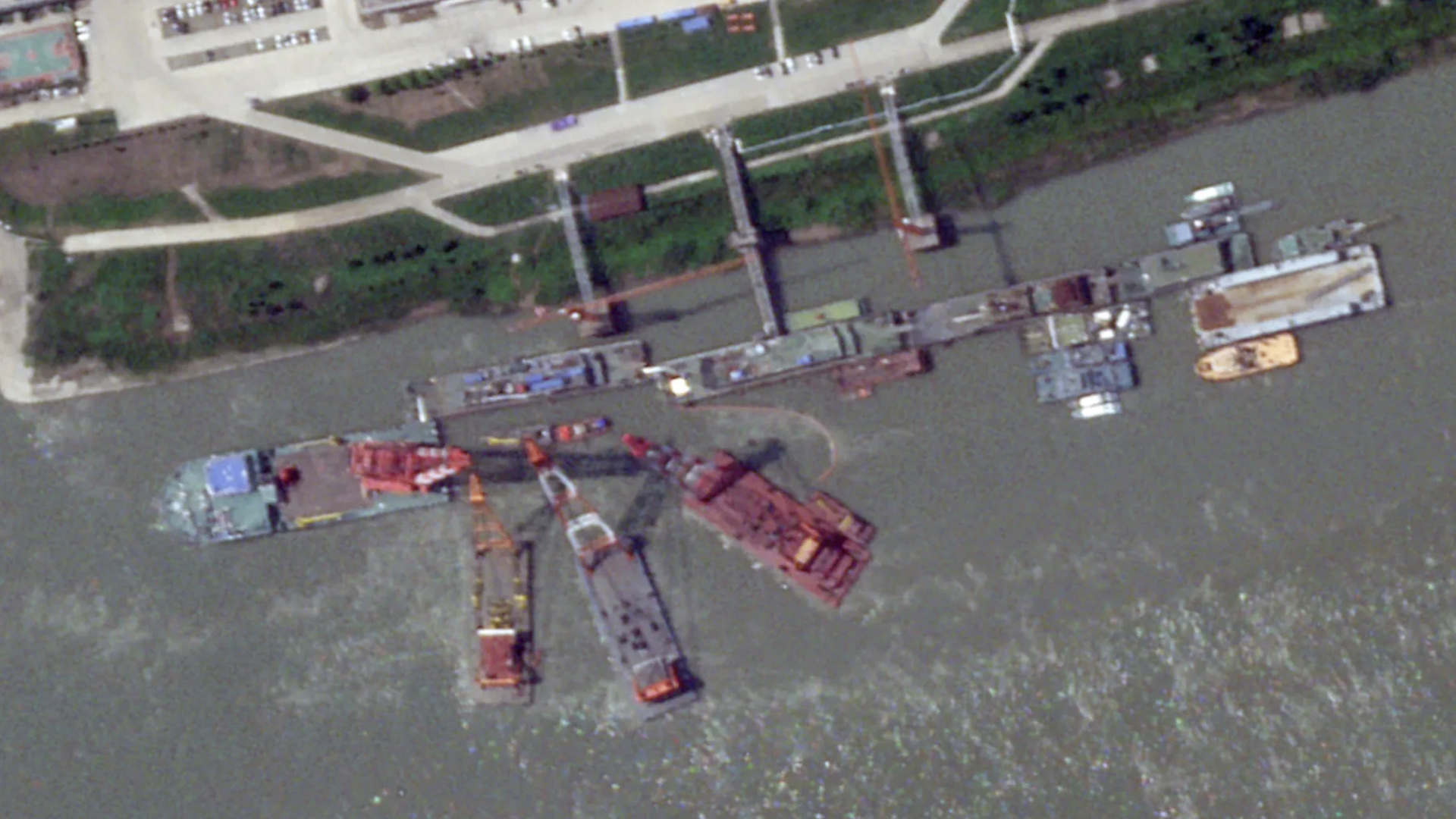The mysterious incident that TWZ previously reported that occurred at China’s Wuchang Shipyard in the spring of this year resulted in the sinking of the country’s latest nuclear-powered attack submarine, according to U.S. officials. The boat in question, originally identified as a conventionally powered submarine, was the first of the new Type 041 Zhou class SSNs.
Citing unnamed U.S. officials, a report in The Wall Street Journal today describes an attempt by the Chinese authorities to cover up the accident, involving a submarine “likely” carrying nuclear fuel when it sank. The boat had been undergoing its final fitting out before going to sea.
“American officials haven’t detected any indication that Chinese officials have sampled the water or nearby environment for radiation,” the article continues. “It is possible Chinese personnel were killed or injured when the sub sank, but U.S. officials say they don’t know if there were casualties.”
There had already been signs that something was amiss at Wuchang Shipyard, part of the state-owned China State Shipbuilding Corporation (CSSC), located on the Yangtze River just outside the city of Wuhan.
The unusual activity at the Wuchang Shipyard was first observed by Tom Shugart, an adjunct senior fellow at the Center for a New American Security (CNAS) think tank and a retired U.S. Navy submarine warfare officer.
TWZ previously examined satellite imagery showing the sudden appearance of four crane barges at the shipyard in China, these being in place at least from June 12 through June 17. A submarine that had been in the berth in May was absent during those dates, but it was not clear when exactly it was last seen. By the first week of July, the barges were gone and activity at Wuchang appears to have returned to normal.

The U.S. officials didn’t provide details of the alleged accident, beyond the fact that it involved one of the new Zhou class SSNs, a design that features a distinctive X-shaped stern. This feature is designed for improved maneuverability, efficiency, and safety, and also helps reduce the acoustic signature across significant parts of the submarine’s operating envelope, as you can read about here.
Using those four cranes, the submarine is said to have been salvaged, but the WSJ report suggests it will “likely take many months before it can be put to sea” — presuming that is even possible. If the submarine fully sank, its internal spaces would likely have filled with water, requiring the replacement of all the electronics.

“It’s not surprising that the PLA Navy would try to conceal the fact that their new first-in-class nuclear-powered attack submarine sank pier-side,” a senior U.S. defense official told the WSJ. “In addition to the obvious questions about training standards and equipment quality, the incident raises deeper questions about the PLA’s internal accountability and oversight of China’s defense industry, which has long been plagued by corruption.”
Confirmation from U.S. sources of an accident at one of China’s most important shipyards, and in particular one that constructs new submarines, is certainly significant. As the above U.S. defense official alludes to, there have been questions raised in the past about safety and quality control practices in Chinese naval shipbuilding, which is often observed progressing very rapidly, even when it comes to large and/or complex vessels.

Despite — or because of — these shortcomings, China has demonstrated it’s exponentially more capable of building submarines and other warships than the United States, as you can read more about here. Now the comparative quality of those vessels remains debatable. With that in mind, the sinking of a new SSN is a setback, but not one that is likely to hugely change the pace of the country’s submarine-building program, which, in contrast to the U.S. equivalent, involved nuclear-powered and conventionally powered designs.
The fact that a new SSN is being built at the Wuchang Shipyard is significant in itself.

In the past, the Wuchang Shipyard has been predominantly associated with the construction of variants of the Type 039A series boats, also known in the West as the Yuan class. The shipyard also builds various types of surface warships and supports other naval developmental work, including past testing of an electromagnetic railgun. It produces commercial vessels and now it can also add nuclear-powered submarines to the list.
It’s very unlikely that Chinese authorities will reveal any details of what happened with the submarine during the incident earlier this year. And while it probably will have little impact on the rapidly growing People’s Liberation Army, its disclosure by U.S. officials does reveal some interesting aspects of the country’s increasingly diverse submarine-building efforts.
Contact the author: thomas@thewarzone.com
